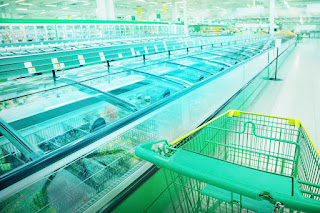Commercial refrigeration services in the Bronx
East Coast Refrigeration offers a full line of commercial refrigeration products. Here's just a taste of the equipment we service and install:
- Ice machines
- Ice storage and delivery systems
- Walk-in coolers freezers
- Condensing units and industrial compressors
- Foodservice equipment
- Chillers
- HVAC units
Industrial refrigeration services in Brooklyn
We also design and install industrial refrigeration systems aimed at extending equipment lifespan, reducing costs and making your business as energy efficient as possible. Allow us to customize a unique industrial refrigeration system that meets your needs -- in quality, reliability and efficiency. Products we offer include:
- Reciprocating and screw compressors
- Pressure vessels
- Evaporative condensers
- Cooling towers and chillers
To learn more about our process, call East Coast Refrigeration today at 631-249-4556. We offer 24-hour emergency service, so don't hesitate to contact us this holiday season!
For more tips, find us on Facebook, Twitter and YouTube.





































